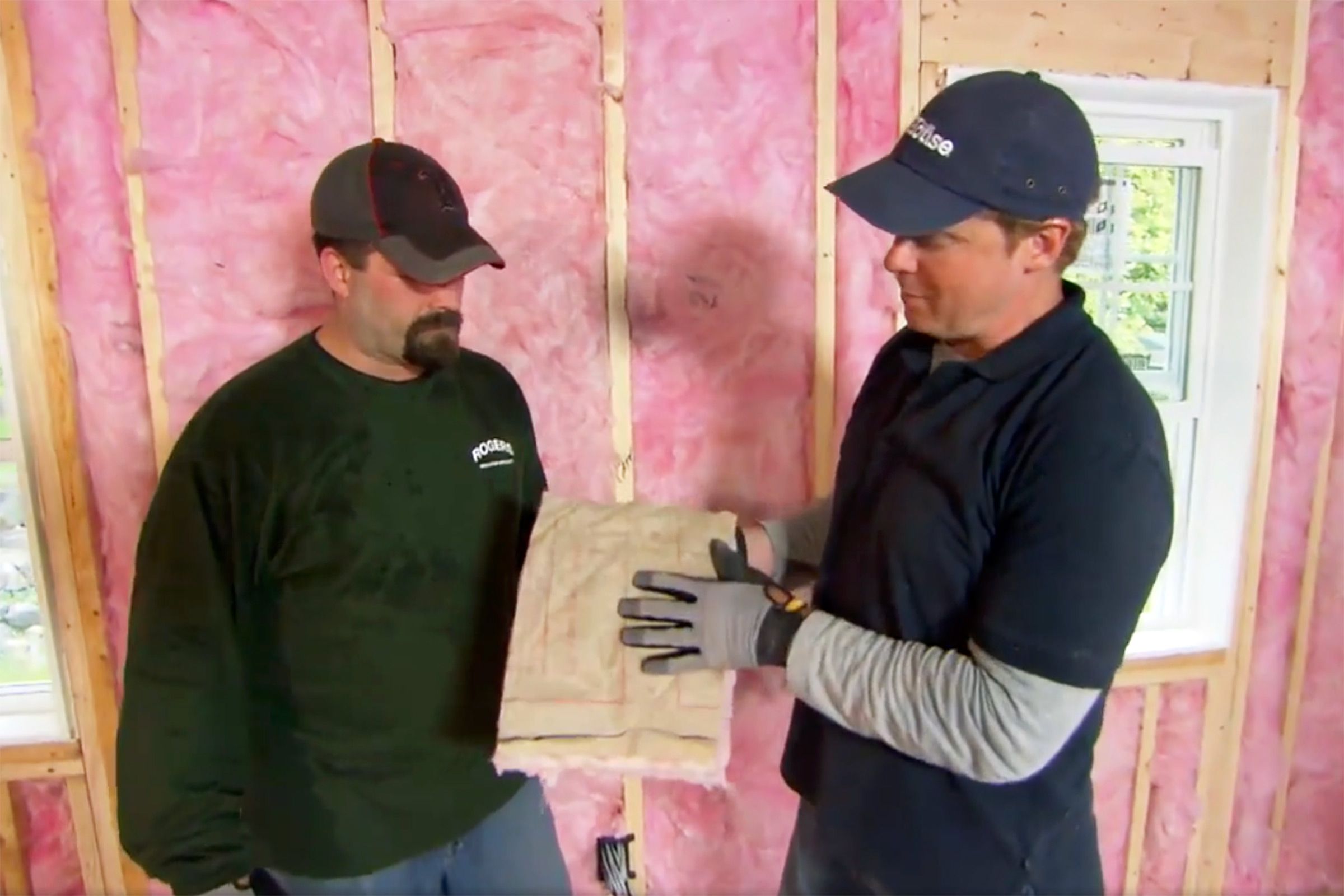A poorly insulated house can mean hard-earned cash gets sucked right out of windows, doors, and other drafty spots. A well-insulated house, on the other hand, keeps warm air inside during winter and cool air inside during summer, reducing energy costs and improving overall comfort. This comprehensive guide will explore various insulation techniques and materials for different areas of your home. We’ll also link to some of our most helpful videos for creating an airtight home.
Energy-Saving Benefits of Proper Insulation
Investing in proper insulation offers numerous benefits:
- Enhanced indoor air quality
- Improved home comfort
- Increased home value
- Lower heating and cooling costs
- Reduced carbon footprint
The U.S. Environmental Protection Agency estimates that the average homeowner can save up to 15% on their heating and cooling bills by sealing air leaks and adding insulation to problem areas such as basements and attics.
Below are some projects you can take on to reach that goal.
How To Choose and Use Insulation
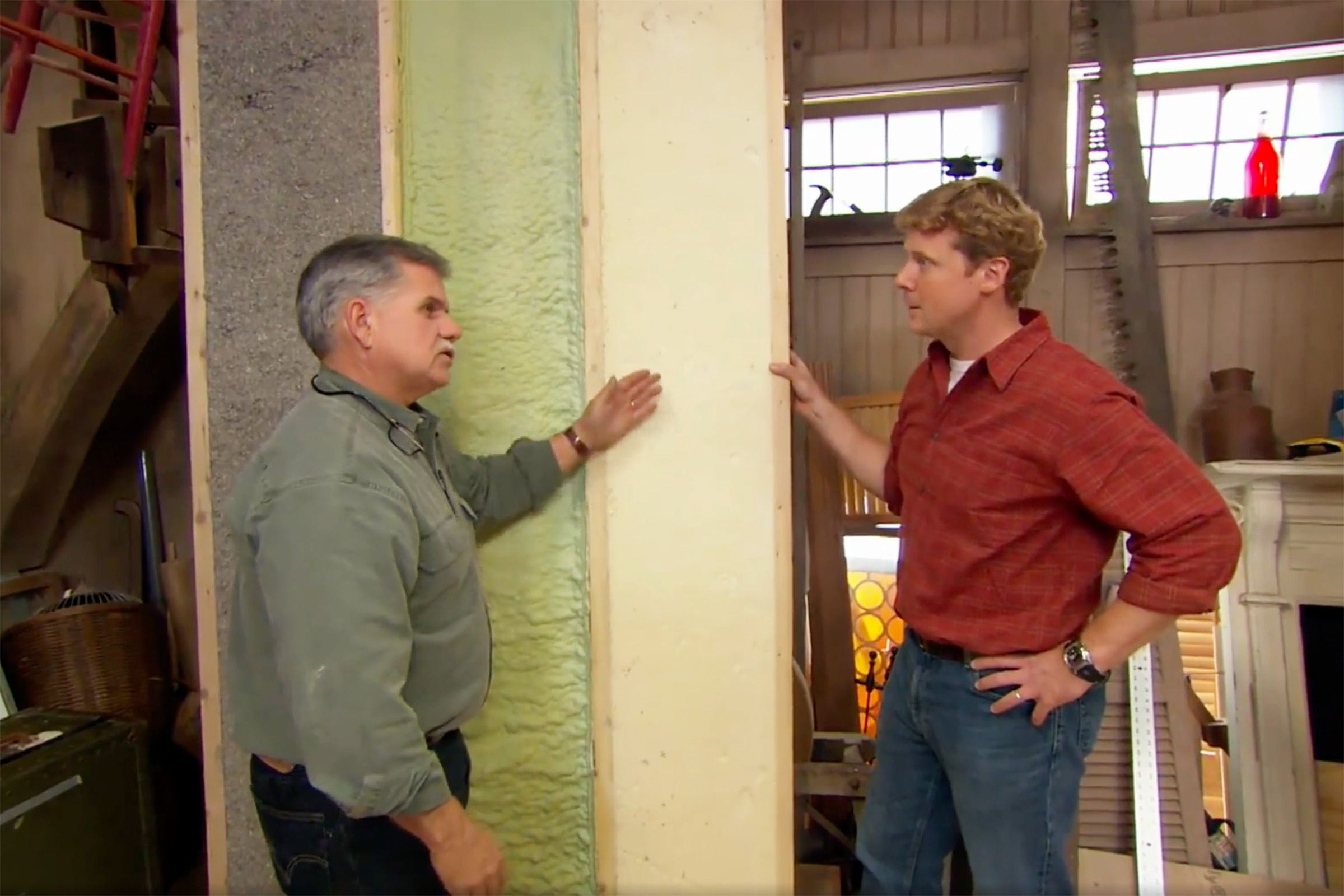
Understanding the types of insulation materials available and the concept of R-value will help you make informed decisions about your home’s insulation needs.
Types of Insulation Materials
There are several types of insulation materials available for homeowners, each with its own set of advantages and applications.
- Cellulose: Made from recycled paper products, cellulose is an eco-friendly option often used as loose-fill insulation.
- Fiberglass: Available in batts, rolls, or loose-fill form, fiberglass is one of the most common and cost-effective insulation materials.
- Mineral wool: Also known as rock wool, this material is fire-resistant and excellent for soundproofing.
- Rigid foam boards: These panels offer high insulation value and are ideal for areas with limited space.
- Spray foam: This versatile insulation expands to fill gaps and cracks, providing excellent air sealing properties.
R-Value and Its Importance
R-value is a measure of insulation’s thermal resistance—its ability to resist heat flow. The higher the R-value, the better the insulation’s performance. Many areas of your home require different R-values based on climate and building codes. For example, attics typically need higher R-values than walls. When choosing insulation, consider the recommended R-values for your climate zone to ensure optimal energy efficiency.
Watch This Old House TV general contractor Tom Silva explain the wide world of insulation.
How To Beef Up Attic Insulation
The attic is one of the most critical areas for insulation in your home. A properly insulated attic can significantly reduce heat loss in winter and heat gain in summer, leading to substantial energy savings.
Addressing Attic Air Leaks
Before adding insulation, seal any air leaks in your attic. Common areas for leaks include the following:
- Along the attic hatch or door
- Around chimney and plumbing vents
- Where walls meet the attic floor
Use caulk or expanding foam to seal these leaks, ensuring a tight air barrier before installing insulation.
Steps for Insulating an Attic
Improving your attic’s insulation is a cost-effective way to enhance your home’s energy efficiency. Here’s how to do it:
- Assess your current insulation: Measure the depth of existing insulation to determine if more is needed.
- Choose the right insulation: Loose-fill or batt insulation works well for most attics.
- Ensure proper ventilation: Maintain attic ventilation to prevent moisture buildup.
- Install insulation: Lay new insulation perpendicular to the joists, covering them completely.
Pro tip: When installing batting or loose-fill insulation, never compress it. The air within the material is part of what makes it effective. Watch Silva provide other tips for the proper way to insulate an attic.
How To Properly Insulate Walls
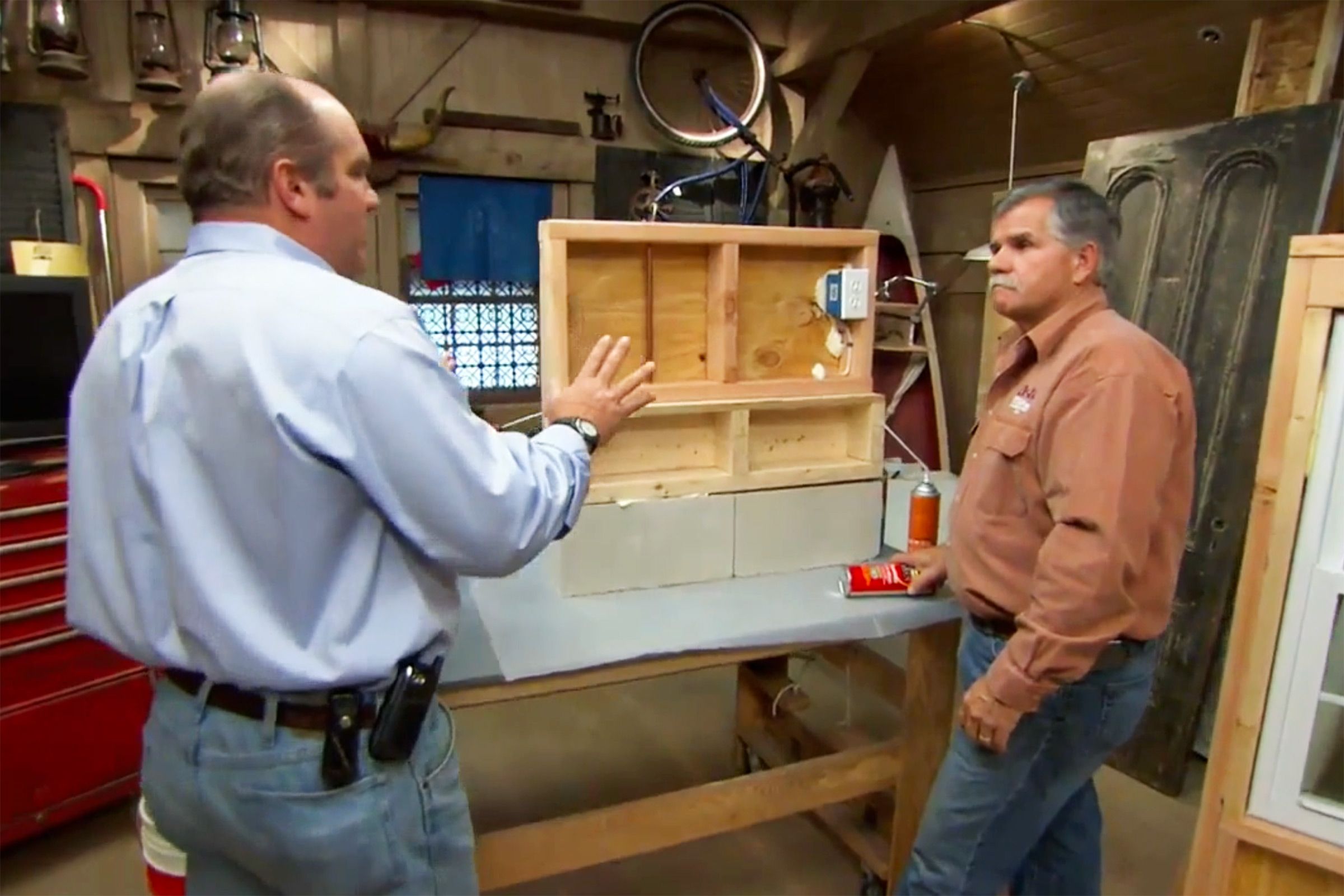
Whether you’re dealing with existing walls or new construction, well-insulated walls are essential for maintaining a comfortable indoor temperature and reducing energy costs.
Insulating Existing Walls
Insulating existing walls can be challenging but not impossible. Here are some methods:
- Blow-in insulation: Small holes are drilled into walls, and insulation is blown in.
- Injection foam: Similar to blow-in, but uses expanding foam insulation.
- Remove and replace: For major renovations, remove drywall, add insulation, and replace.
New Construction Wall Insulation
For new construction or major renovations, you have more options for wall insulation:
- Batt insulation: Fits between wall studs and is easy to install.
- Rigid foam boards: You can install them on the exterior of wall sheathing for continuous insulation.
- Spray foam: Provides excellent air sealing and insulation in one application.
Spray Foam vs. Rigid Foam Boards
Foam insulation provides the highest R-value per inch of material, and it comes in both spray form and rigid foam boards. Here’s how these insulation types compare.
Spray Foam
- Pros: Excellent air sealing, high R-value, fills irregular spaces
- Cons: More expensive, requires professional installation
Rigid Foam Boards
- Pros: High R-value, moisture-resistant, can be a do-it-yourself (DIY) project
- Cons: Requires careful cutting and sealing to be effective
If spray foam sounds right for you, watch Silva explain everything you need to know about spray foam insulation.
How To Prevent Drafts from Windows and Doors
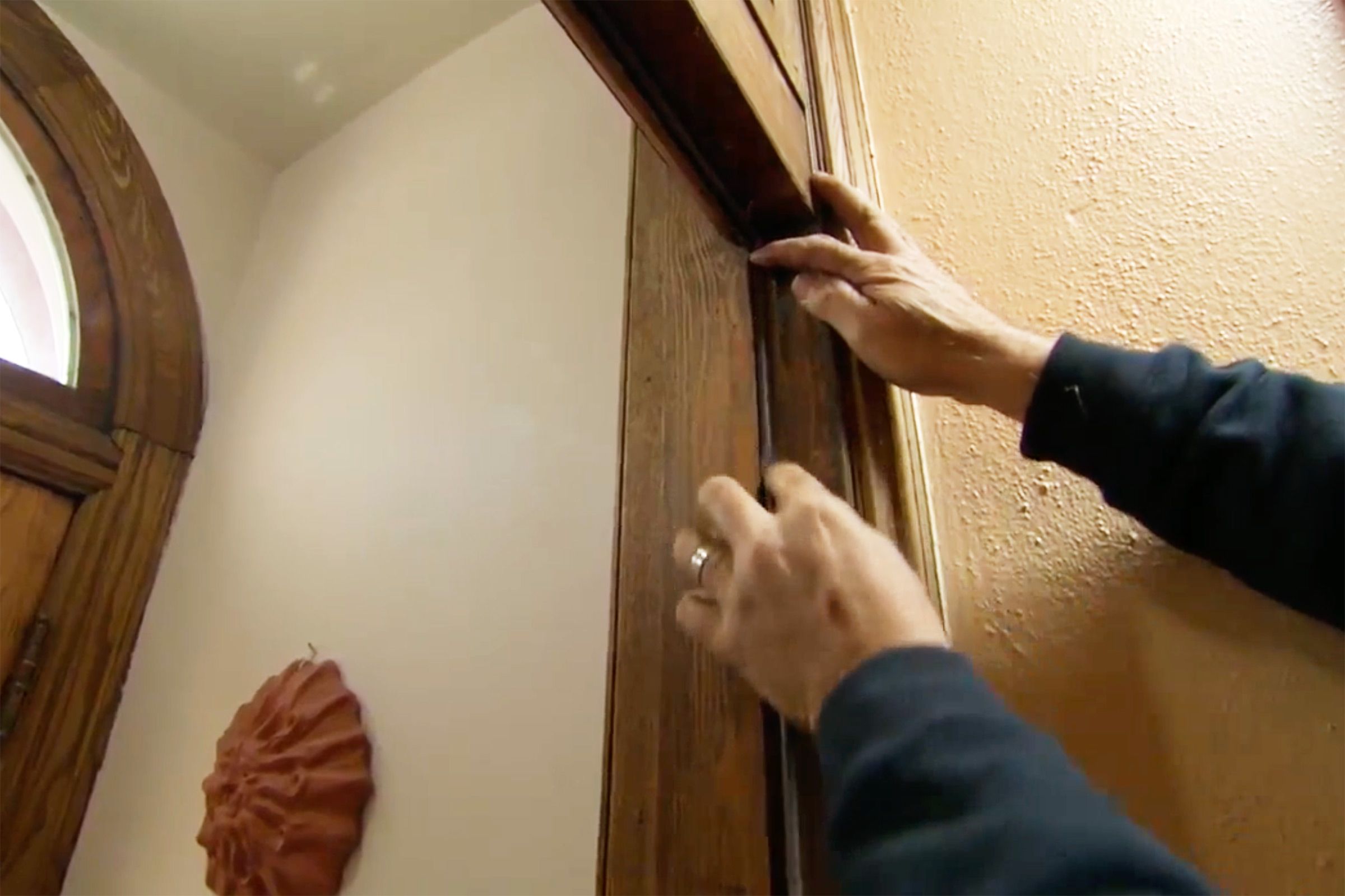
Windows and doors are common sources of drafts and heat loss in homes. Proper leak sealing and weatherstripping can significantly improve their performance.
Weatherstripping a Front Door
Weatherstripping your front door can prevent drafts and save energy. Here’s how to DIY it:
- Clean the door frame thoroughly.
- Measure the sides and top of the door frame.
- Cut weatherstripping to fit.
- Apply adhesive-backed weatherstripping to the frame.
- Install a door sweep at the bottom of the door.
Let guests—not gusts—in with these steps for a weather-tight entry. Watch Silva share his fast fixes for a drafty door.
Insulating Window Weight Pockets
Older windows with weight pockets can be a significant source of heat loss. This process can significantly improve the energy efficiency of older windows without replacing them entirely. Do the following to insulate them:
- Remove the interior window trim carefully.
- Cut the sash cords and remove the weights.
- Fill the pocket with spray foam insulation.
- Reinstall the trim.
For a visual look at this process, watch Silva demonstrate how to insulate window weight pockets.
How To Insulate Basements and Crawl Spaces
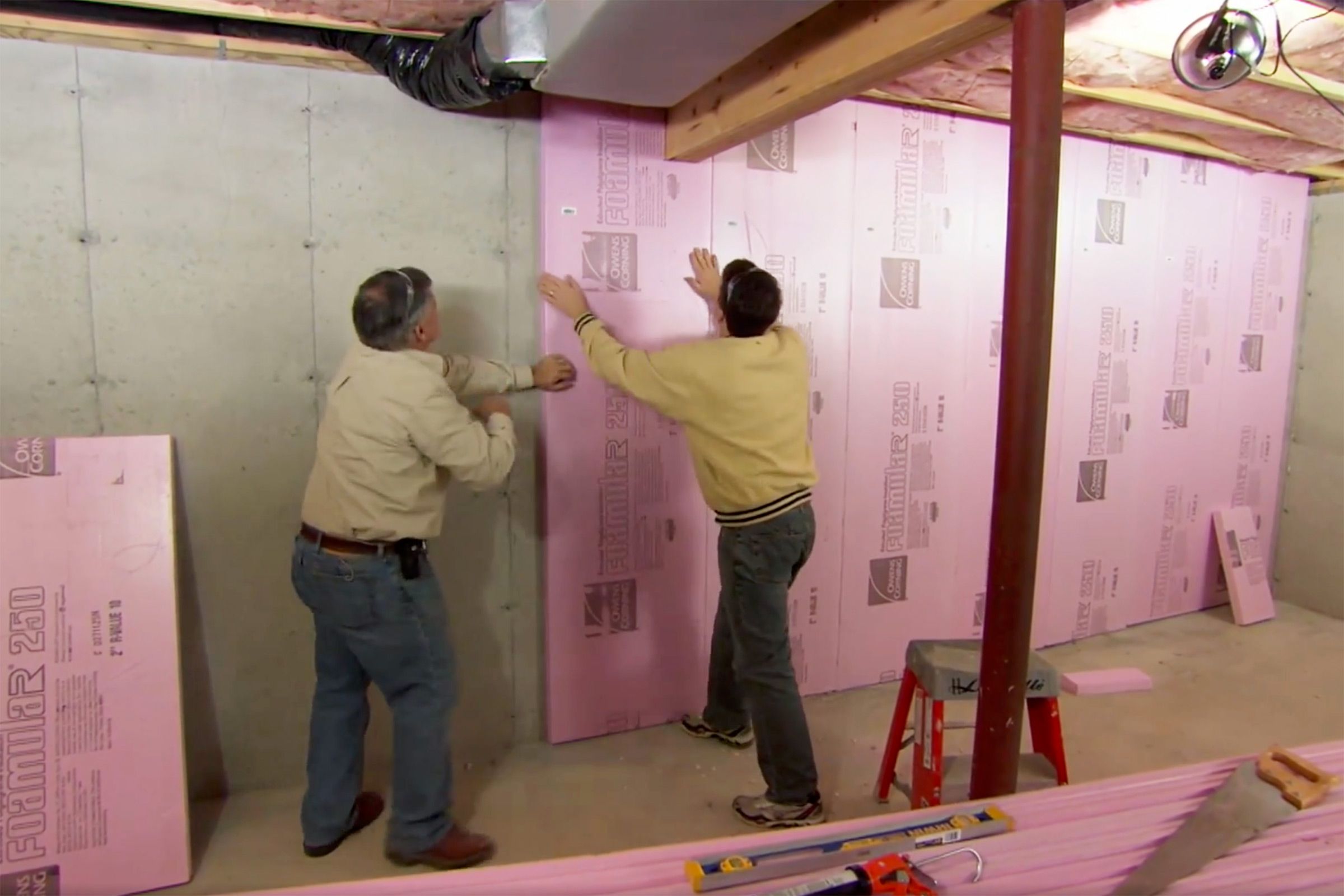
Insulating basements and crawl spaces is often overlooked but can significantly impact your home’s energy efficiency and comfort.
How To Insulate a Basement
Insulating a basement can transform it into a comfortable living space while improving your home’s overall energy efficiency. Here’s a basic approach:
- Address moisture issues: Ensure proper drainage and use a vapor barrier if needed.
- Insulate walls: Use rigid foam boards or frame out walls and use batt insulation.
- Insulate the rim joist: This area is often overlooked but crucial for preventing heat loss.
- Consider insulating the floor: If the basement is unheated, insulate under the subfloor above.
Dealing With Moisture in Below-Grade Spaces
Moisture control is essential when insulating basements and crawl spaces. Deal with moisture before insulating so you don’t set yourself up for rotting insulation or structural problems later. Here’s how:
- Consider installing a sump pump for areas prone to flooding.
- Ensure proper grading and drainage around your home’s foundation.
- Install a dehumidifier in damp basements.
- Use a vapor barrier on the ground in crawl spaces.
For more tips, watch Silva insulate a basement.
DIY Insulation Projects for Homeowners
Some insulation projects are more DIY-friendly than others. Below are two that even novice homeowners can handle.
Installing Fiberglass Insulation
Fiberglass insulation is relatively easy to install in accessible, unfinished areas such as attics. Here’s a basic process:
- Determine the thickness and R-value you need.
- Wear protective gear (gloves, mask, long sleeves).
- Measure the space between joists or studs.
- Cut batts to fit snugly.
- Place insulation without compressing it.
- Ensure complete coverage without gaps.
Watch TOH host Kevin O’Connor show how to fill gaps with fiberglass insulation to make a space cozier and energy efficient.
Sealing Air Leaks Around the House
Identifying and sealing air leaks is a simple yet effective way to improve your home’s energy efficiency. Consider doing the following:
- Checking for drafts around windows, doors, and outlets.
- Installing weatherstripping on movable components like doors and windows.
- Not neglecting often-overlooked areas such as attic hatches and baseboards.
- Using caulk for small gaps and expanding foam for larger ones.
Watch Silva demonstrate how to save money and stay warm by plugging up energy-wasting gaps, holes, and cracks.
Professional Insulation Services: When To Call In Experts
Alternatively, some insulation needs are beyond even the skills of experienced DIYers. Here are some situations that call for professional help:
- Complex or hard-to-reach areas
- Insulating inside existing walls
- Large-scale insulation projects
- Spray foam installation
- When special equipment is required
When looking for reputable insulation professionals in your area, check for proper licensing, make sure they have experience installing the type of insulation you want, and get quotes from at least three contractors to get a better understanding of pricing in your area.
Our Conclusion
Proper insulation is a key component of an energy-efficient, comfortable home. By understanding the basics of insulation and addressing each area of your house—from the attic to the basement—you can significantly improve your home’s performance and reduce energy costs. Remember to consider your climate, local building codes, and specific home needs when planning your insulation strategy.
